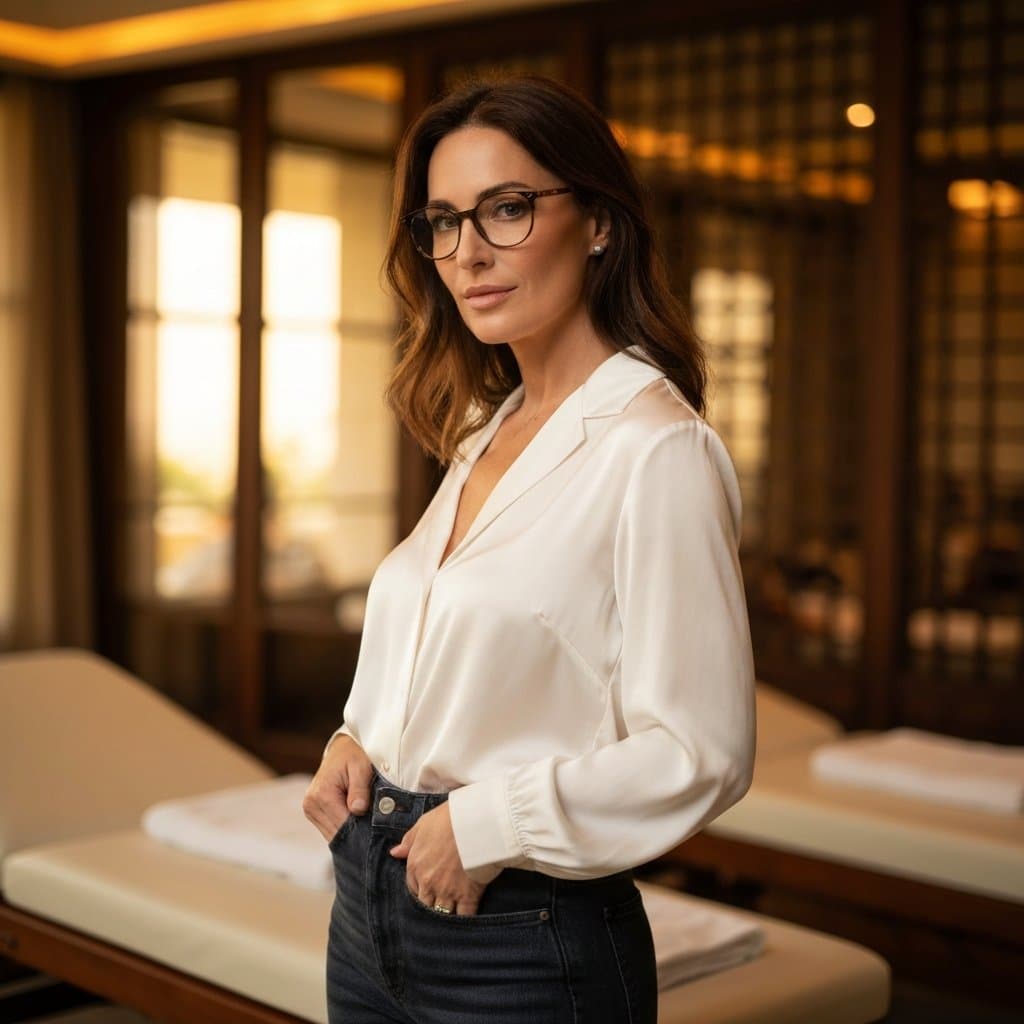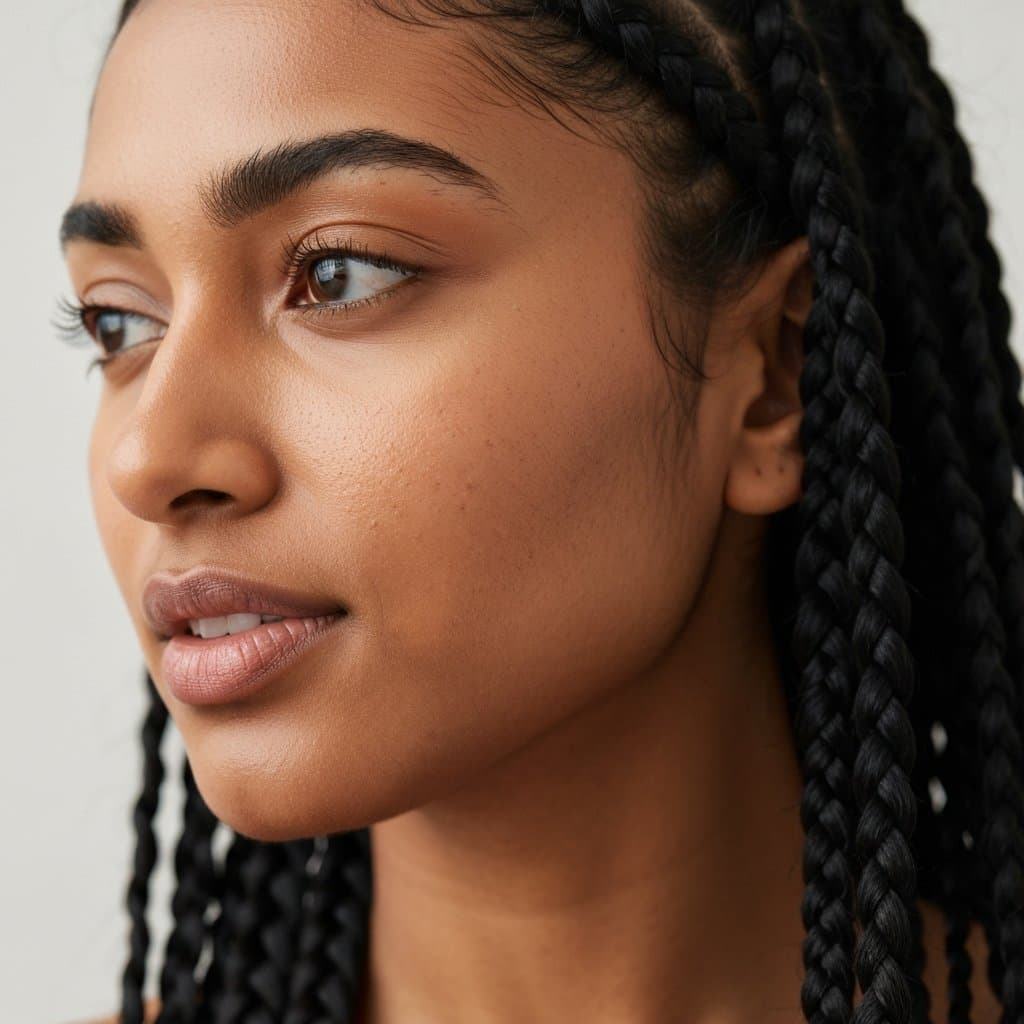Hair Color: A Guide to Finding the Perfect Shade for You | Expert Tips & Trends
Your Ultimate Guide to Finding the Perfect Hair Color
Choosing a new hair color is more than just a simple change; it's a form of self-expression, a confidence booster, and a way to refresh your entire look. The right shade can illuminate your complexion, make your eyes sparkle, and harmonize with your personal style. However, with an endless spectrum of colors, from sun-kissed blondes and rich brunettes to fiery reds and bold fashion shades, the decision can feel overwhelming. This guide is designed to demystify the process of finding the perfect hair color. We'll explore the crucial factors to consider, from your skin's undertones to your lifestyle, ensuring your next trip to the salon is a resounding success.
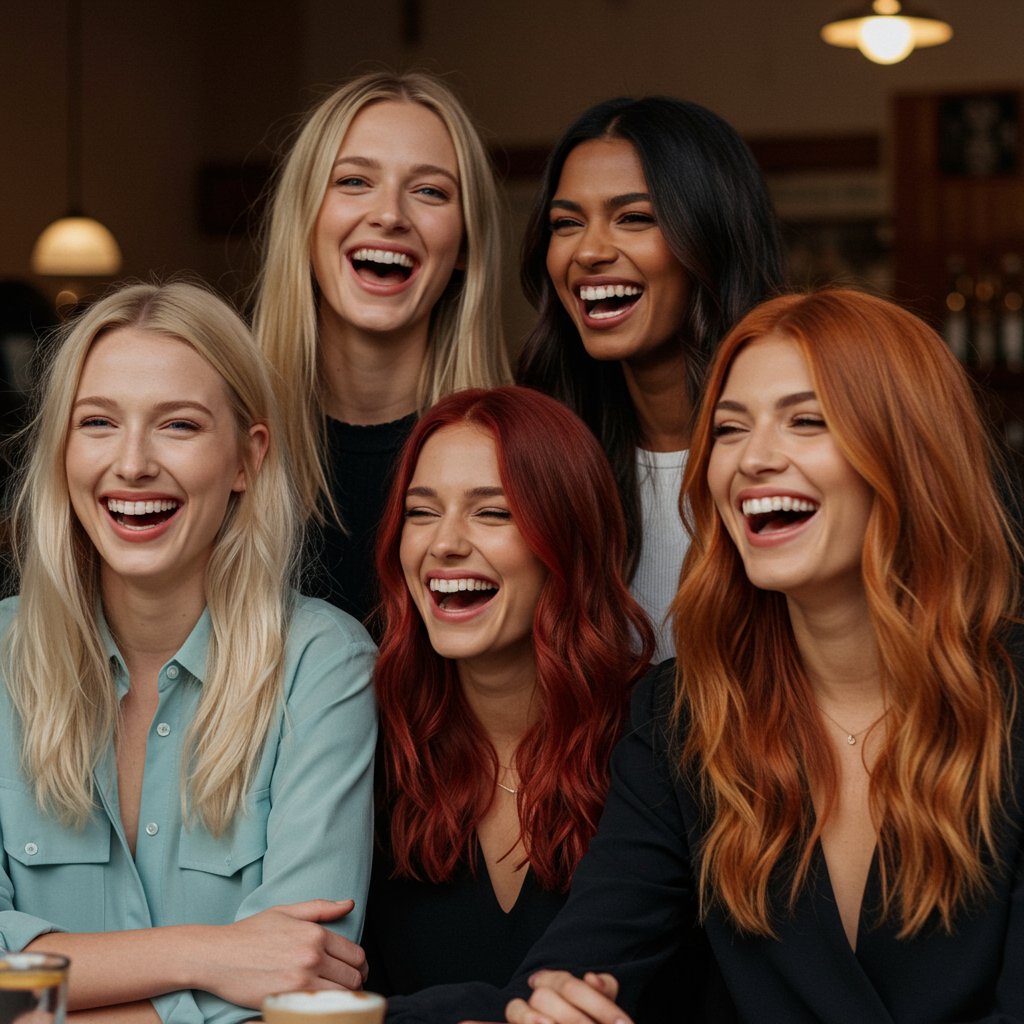
Embarking on a hair color journey is an exciting prospect. A well-chosen color looks intentional and incredibly flattering, while a mismatched shade can do the opposite. The secret lies in a personalized approach. It's not about chasing the latest trend without thought, but about understanding the principles of color theory as they apply to you. By learning how to analyze your unique features and considering the practical aspects of hair color maintenance, you can collaborate effectively with a professional stylist to achieve a result that is not only beautiful but also authentically you.
This comprehensive guide will walk you through everything you need to know. We'll delve into identifying your skin's undertone, the powerful impact of eye color, the realities of maintenance, and the latest trends to inspire you. Armed with this knowledge, you can step into a salon with clarity and confidence, ready to find the hair color that was practically made for you.
The Foundation: Understanding Your Skin's Undertones
Before you even glance at a hair color swatch, the most critical step is to understand your skin's undertone. This is the subtle hue beneath your skin's surface that never changes, regardless of how tanned you are. Your undertone is the secret key to finding a hair color that complements your complexion rather than clashing with it. There are three main categories: cool, warm, and neutral. Identifying yours will dramatically narrow down your options to the most flattering ones.
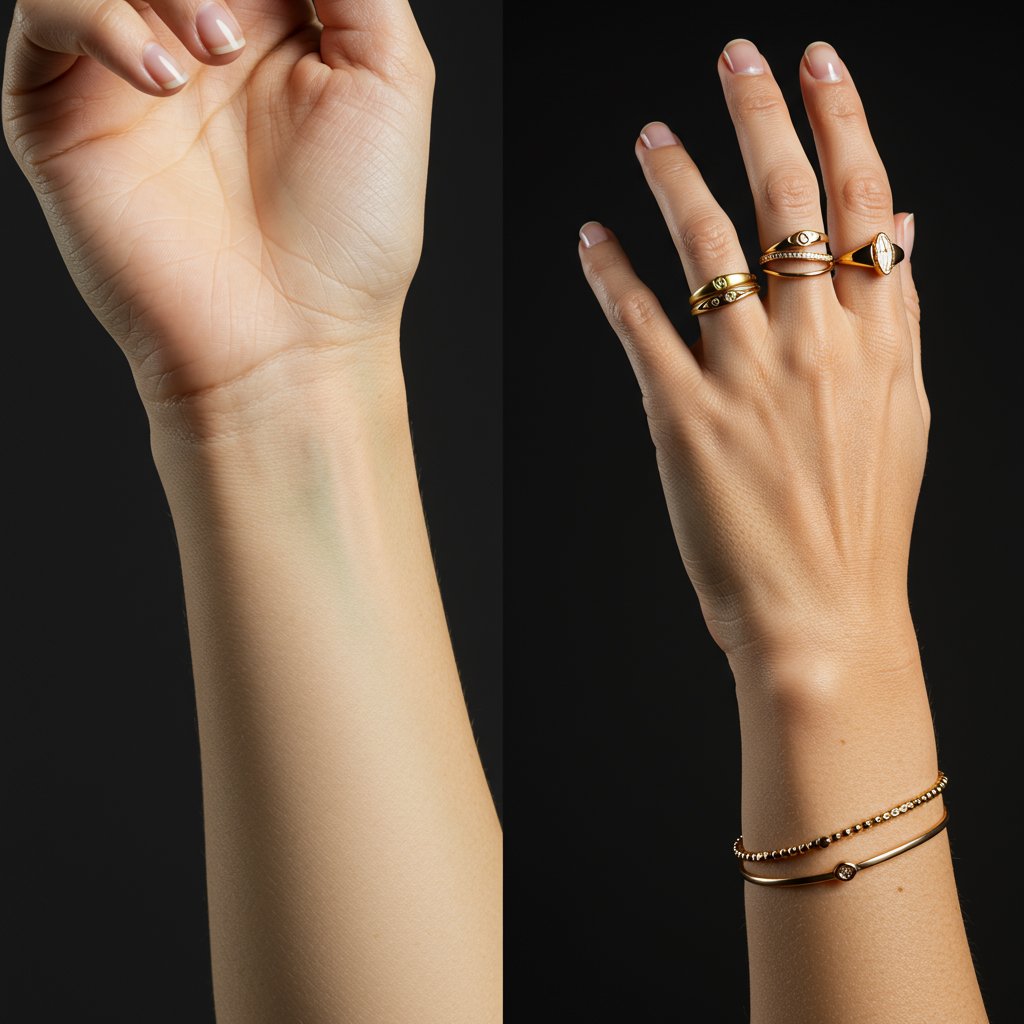
Cool undertones are characterized by pink, red, or bluish hues. People with cool undertones often find that silver jewelry looks best on them and their skin may burn easily in the sun. Warm undertones, on the other hand, have hints of yellow, peachy, or golden tones. Gold jewelry is typically more flattering, and they tend to tan rather than burn. Neutral undertones are a balanced mix of both cool and warm hues, meaning you can pull off a wider range of colors and both silver and gold jewelry look great.
To determine your undertone, you can use a few simple tests. The Vein Test is a popular method: look at the veins on the inside of your wrist in natural light. If they appear blue or purple, you likely have cool undertones. If they look greenish, you have warm undertones. If you can't decide or see a mix of both, you're probably neutral. Another method is the Jewelry Test. Hold both silver and gold jewelry up to your face. Which one makes your skin look more radiant and healthy? Silver points to cool, while gold suggests warm. This foundational knowledge is what professional colorists use to begin formulating your perfect shade.
Your Eyes Have It: Matching Hair Color to Eye Color
Your eyes are one of your most captivating features, and the right hair color can make them truly stand out. Creating a harmonious or contrasting look between your hair and eye color can have a stunning impact. The goal is to choose a shade that either complements the tones in your iris or creates a beautiful contrast that makes them pop. A skilled stylist considers this interplay to elevate your overall look from good to unforgettable.
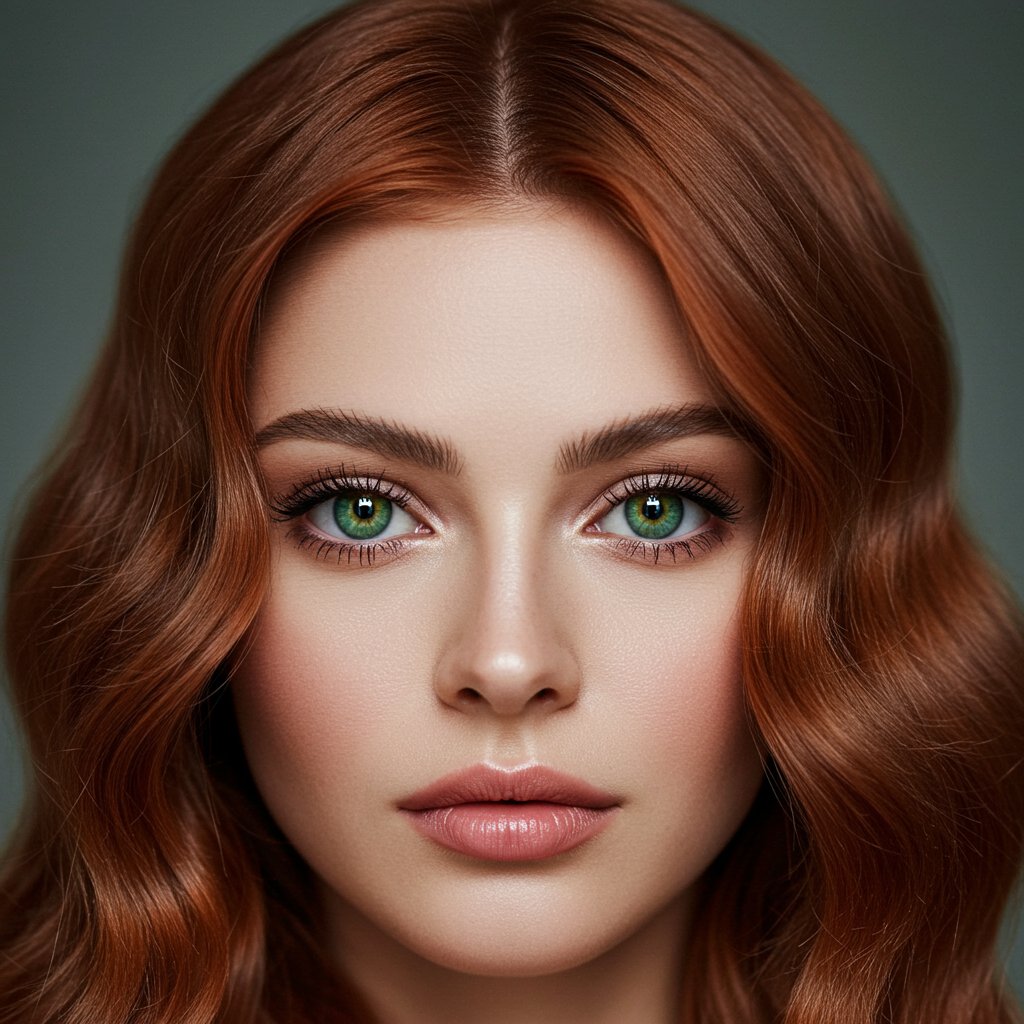
For those with blue or gray eyes, warm, contrasting colors create a striking effect. Think golden blondes, rich coppers, and warm auburns. These shades make cool-toned eyes appear even brighter and more vibrant. Conversely, icy platinum and ash blondes can create a mesmerizing, ethereal monochromatic look. For green or hazel eyes, colors with red undertones are a perfect match. Deep chocolate browns with a hint of red, vibrant cherry, and rich mahogany shades will accentuate the green flecks in your eyes beautifully. Golden caramel highlights can also bring out the warmth in hazel eyes.
Brown eyes offer incredible versatility. Their depth can be enhanced by a wide range of hair colors. To create a soft, natural look, stick to shades within the same family, like caramel, honey, or warm chocolate brown. These tones add richness and dimension. For a more dramatic, high-contrast look that makes brown eyes appear deeper and more intense, consider a dark espresso or a cool-toned black. Ultimately, the choice depends on the effect you desire—be it a subtle enhancement or a bold statement.
From Natural to Bold: Considering Your Starting Point and Desired Look
Your current hair color and condition—your 'starting point'—are pivotal in determining what's achievable in your color journey. The transition from your natural shade to your desired one can be simple or complex, and it's essential to have realistic expectations. If you have 'virgin' hair (hair that has never been colored), you have a clean canvas, making it easier to achieve a predictable and even result. The process is generally more straightforward, whether you're adding subtle highlights or going for a full color change.
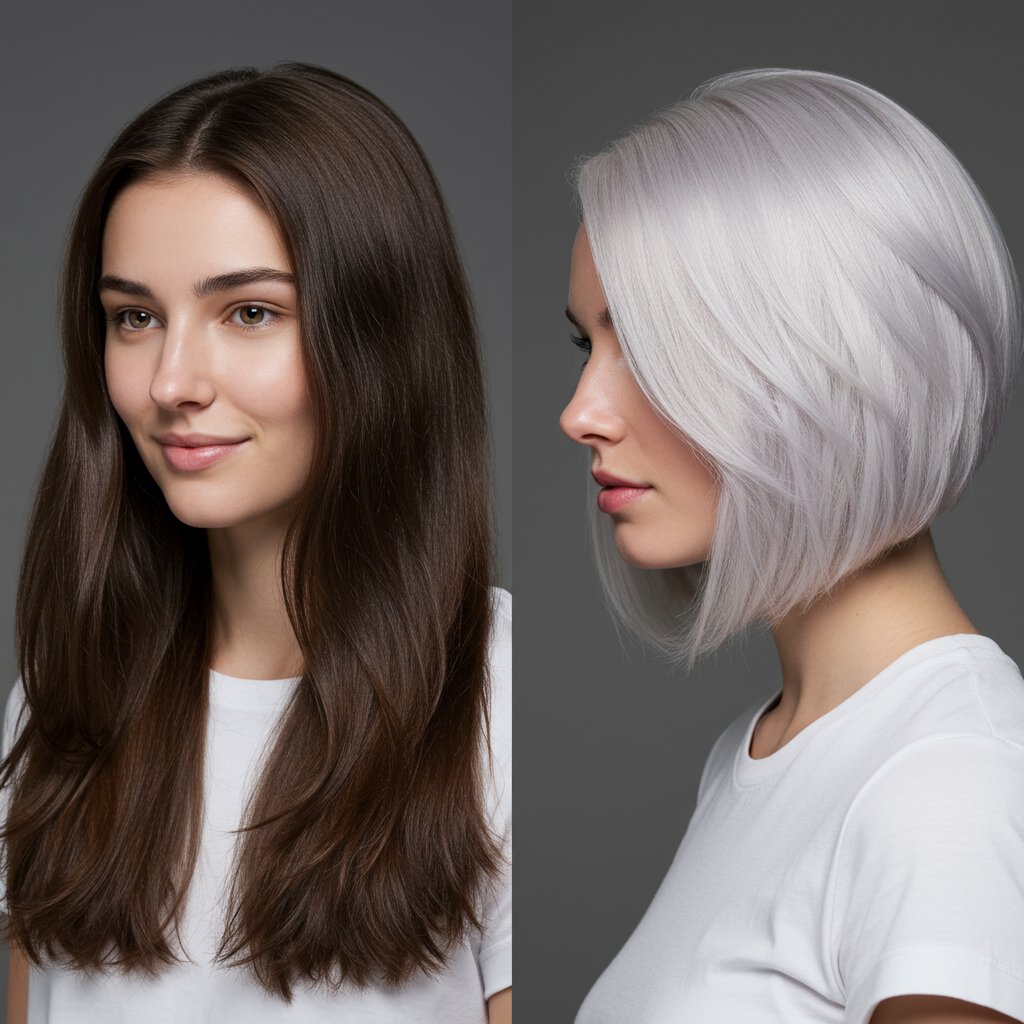
However, if your hair has been previously colored, the game changes. Artificial color does not lift artificial color, meaning you can't simply put a lighter box dye over a darker one and expect it to work. Removing old color is a corrective process that requires professional expertise to avoid damage and uneven results. Your stylist will need to assess your hair's history, porosity, and health to create a safe and effective plan. This might involve color removers or gentle lightening services to create a new base before applying your target shade. This is why being completely honest with your stylist about your hair's history is non-negotiable.
Beyond your starting point, consider the level of transformation you're comfortable with. Are you looking for a subtle shift that enhances your natural color, or are you ready for a dramatic, head-turning change? A subtle change might involve adding balayage highlights a few shades lighter than your base, or applying a gloss to boost shine and tone. A dramatic change, like going from dark brunette to platinum blonde, is a multi-step, multi-session process that requires significant commitment and aftercare. Understanding the difference and communicating your desired outcome clearly will ensure you and your stylist are on the same page.
The Lifestyle Factor: Maintenance, Budget, and Commitment
Your perfect hair color should not only look amazing but also fit seamlessly into your lifestyle. Before you commit to a new shade, it's crucial to have an honest conversation about maintenance. Some colors require frequent salon visits, while others are designed for a graceful grow-out. High-maintenance colors include solid platinum blonde, which requires root touch-ups every 4-6 weeks to avoid a harsh demarcation line, and vibrant reds, which are known for fading faster than other colors and may need regular glossing treatments to stay brilliant.
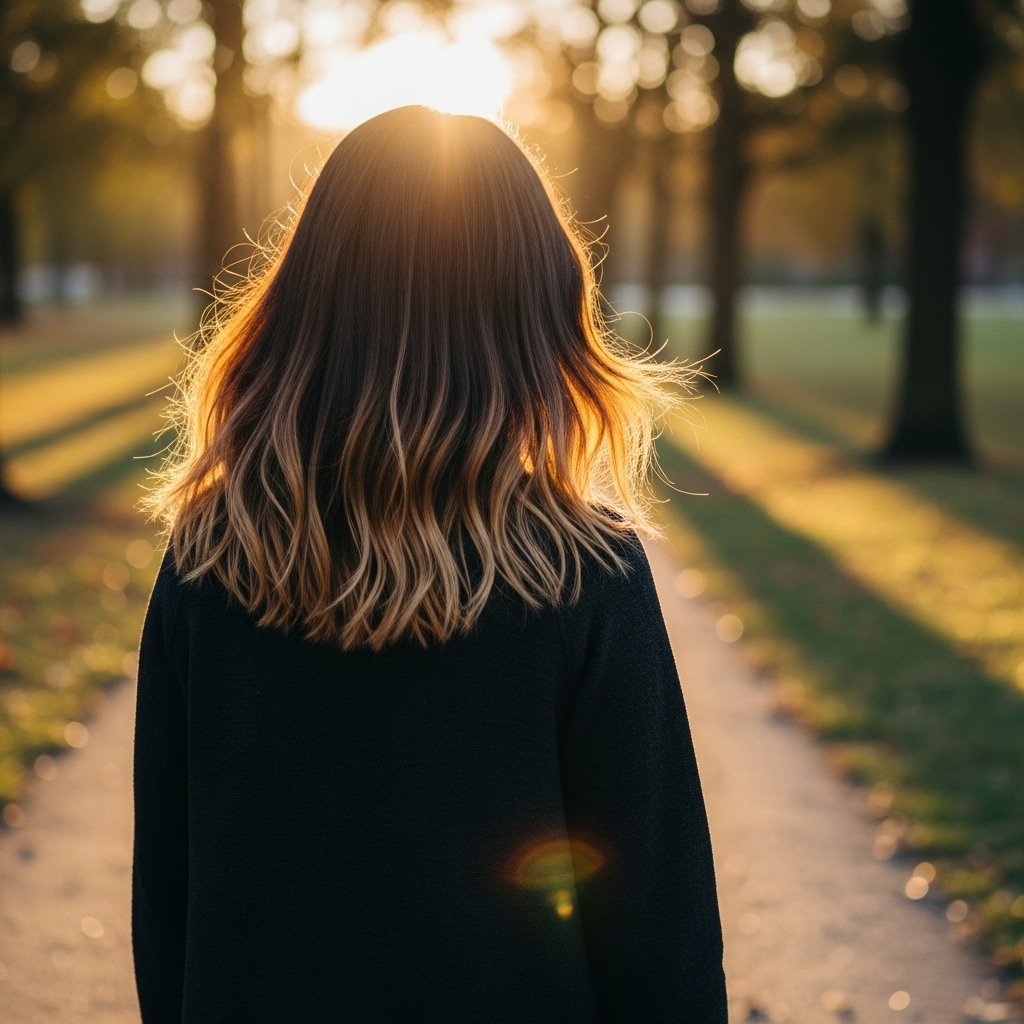
If you prefer a more low-maintenance routine, there are plenty of gorgeous options. Techniques like balayage, ombré, and babylights are designed to blend with your natural root, allowing for a much softer grow-out. This means you can go longer between appointments, often only needing a touch-up every 3-6 months. 'Lived-in' color techniques are specifically designed to look beautiful at every stage, saving you time and money in the long run. Consider how often you're realistically willing and able to visit the salon.
Budget is another key component of the lifestyle factor. A dramatic color transformation is an investment, not just in the initial appointment but in the ongoing upkeep. This includes follow-up appointments for touch-ups or toning, as well as the necessary at-home care products. Professional, color-safe shampoos, conditioners, and treatments are essential for preserving the health and vibrancy of your hair. Be sure to factor these recurring costs into your decision. A great stylist will help you choose a beautiful color that aligns with both your aesthetic goals and your practical lifestyle.
Decoding the Color Chart: Levels and Tones Explained
Walking into a salon and seeing a wall of hair color swatches can be intimidating, but understanding the system stylists use can empower you to better communicate your vision. Professional hair color is universally organized by a system of levels and tones. This system provides a precise language for colorists to describe and formulate the exact shade you're looking for, ensuring consistent and predictable results.
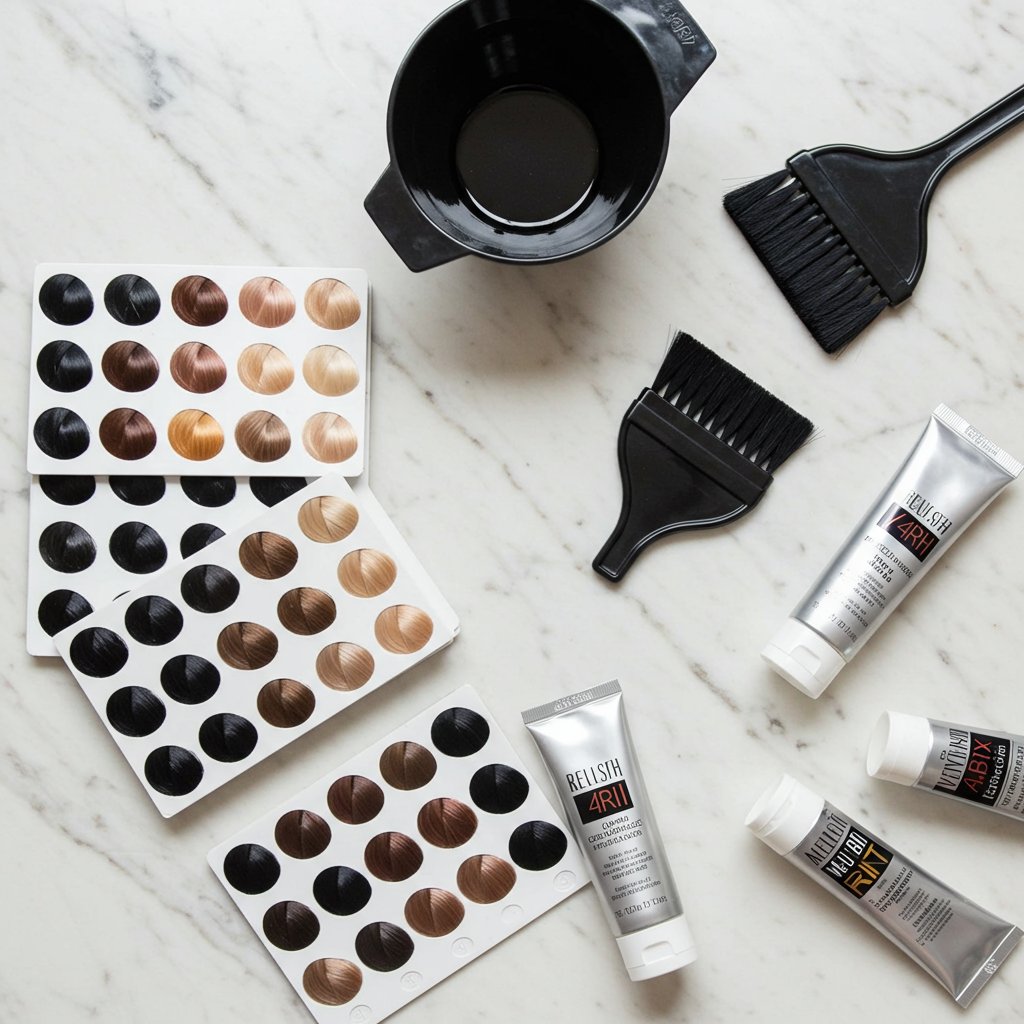
The 'level' refers to how light or dark a hair color is. It's measured on a scale from 1 to 10 (or sometimes 1 to 12). Level 1 is the darkest black, Level 5 is a medium brown, and Level 10 is the lightest, palest blonde. When you tell a stylist you want to 'go lighter' or 'a bit darker,' they are thinking in terms of these levels. Understanding your own natural level is the first step in determining how much lightening or darkening is needed to achieve your goal.
'Tone' refers to the underlying hue or character of a specific level. It's what makes a Level 8 blonde a 'golden blonde,' an 'ash blonde,' or a 'strawberry blonde.' Tones can be warm (golden, copper, red), cool (ash, violet, blue), or neutral. This is where your skin undertone becomes critical. If you have warm undertones, a stylist will likely recommend hair colors with warm or neutral tones, like honey blonde or chestnut brown. If you have cool undertones, ash blonde or cool-toned brunette will be more flattering. Communicating both the level and tone you desire (e.g., 'a Level 7 dark blonde with a neutral-to-cool tone') will help your stylist pinpoint your perfect color with incredible accuracy.
2025 Hair Color Trends: Inspiration for Your Next Look
While the fundamentals of choosing a flattering color remain timeless, looking at current trends can provide exciting inspiration for your next look. For 2025, the focus is on sophisticated, dimensional, and healthy-looking hair. The trends blend natural elegance with personalized touches, moving away from harsh, high-contrast styles towards more refined and blended aesthetics.
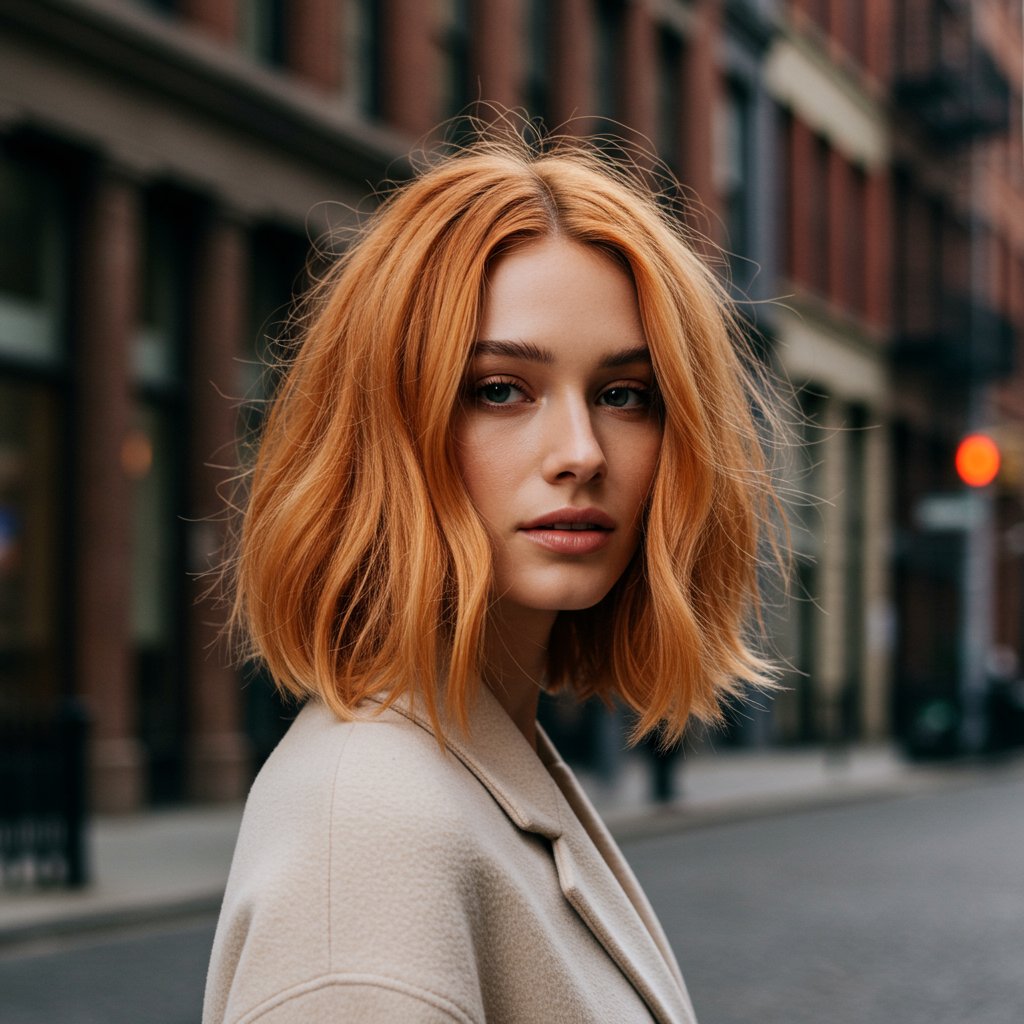
One of the biggest trends is 'Liquid Brunette.' This involves creating a deep, rich, multi-tonal brown with an incredible, glass-like shine. Think deep chocolate, espresso, and rich mahogany shades, all enhanced with glossing treatments that make the hair look supremely healthy and reflective. On the lighter side, 'Apricot Crush' and 'Peach Cobbler' tones are gaining popularity. These are soft, warm blends of copper, gold, and pink, creating a vibrant yet delicate result that is particularly stunning on those with warm or neutral undertones.
Technique-wise, the 'Lived-in' look continues to reign supreme. This includes evolved versions of balayage, such as 'foilyage' for a brighter lift and 'teasylights' for the softest blend. The goal is to create a seamless transition from the natural root, mimicking a natural, sun-kissed effect that requires minimal upkeep. Another emerging trend is 'Ribbon Highlights,' where fine, strategically placed ribbons of color are woven through the hair to create subtle, flowing dimension without an obvious pattern. These trends emphasize hair health and personalized color that enhances, rather than overpowers, your natural beauty.
The Professional Touch: Why a Consultation is Non-Negotiable
The most important tool in finding your perfect hair color isn't a swatch book or a trend report—it's an experienced professional stylist. A thorough consultation is the cornerstone of any successful color service. This is your opportunity to discuss your goals, concerns, and lifestyle, and for the stylist to perform a comprehensive analysis of your hair. This collaborative process is what bridges the gap between the inspiration photo you bring in and the beautiful, healthy reality you walk out with.
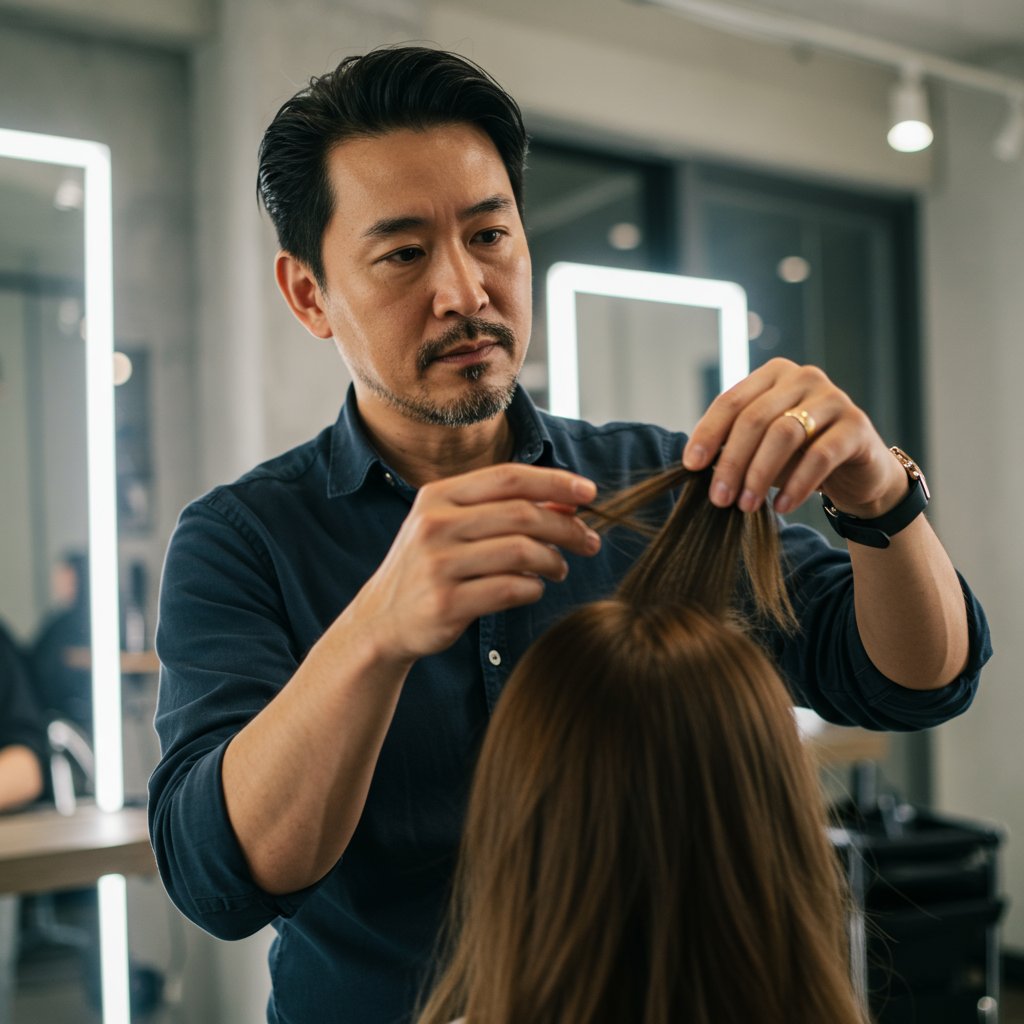
During a professional consultation, a stylist will assess several key factors. They'll determine your hair's texture (fine, medium, coarse), its density, and its porosity (its ability to absorb and retain moisture and color). They will also examine the health of your scalp and hair strands. Crucially, they will discuss your hair history in detail—every previous color, chemical service, and even medication you're on can affect the coloring process. For significant color changes, they may perform a strand test, applying a small amount of color or lightener to a hidden section of hair to see how it reacts. This provides a vital preview of the final result and ensures the integrity of your hair is maintained.
This expert assessment is simply not something you can replicate at home. A professional colorist understands the complex chemistry of hair color and can create a custom formula tailored specifically to you. They know how to counteract unwanted tones, how to achieve even lift on previously colored hair, and how to place color in a way that flatters your haircut and face shape. Investing in a professional consultation isn't just a preliminary step; it's the most critical part of the entire process, ensuring your hair color journey is safe, successful, and results in a look you absolutely love.
Pro Tips for a Flawless Color Journey
- Be Honest and Thorough: Disclose your complete hair history. That box dye from two years ago? It's still in your ends and will affect the outcome. Honesty is key to a predictable result.
- Trust the Process: Major color changes, especially from dark to light, often require multiple sessions. Trust your stylist's plan to prioritize the long-term health of your hair.
- Invest in At-Home Care: Your stylist's work doesn't end when you leave the salon. Protect your investment with professional, sulfate-free, color-safe shampoos, conditioners, and weekly deep conditioning masks.
- Protect from Heat and Sun: Use a heat protectant spray before any heat styling. UV rays can also cause color to fade, so consider a UV protectant spray or wearing a hat during prolonged sun exposure.
- Schedule Regular Toning/Glossing: Book a quick glossing service between full color appointments. This will refresh your tone, add incredible shine, and extend the life of your color.
Frequently Asked Questions (FAQ)
1. How often should I touch up my hair color? This depends entirely on the type of color and technique. A solid, all-over color or traditional highlights will require a root touch-up every 4-8 weeks. A softer technique like balayage can often go 3-6 months between appointments.
2. Can I go from very dark to very light hair in one session? It is highly unlikely and not recommended. A dramatic transformation from dark to light is a journey that typically requires multiple sessions spaced several weeks apart to maintain the health and integrity of your hair. Pushing it too fast can lead to severe damage and breakage.
3. What is the difference between balayage and highlights? Traditional highlights are created using foils to isolate sections of hair, resulting in a more uniform and defined pattern of lightened strands from root to tip. Balayage is a freehand painting technique where the colorist sweeps lightener onto the hair, creating a soft, blended, sun-kissed look that grows out more naturally.
4. Will coloring my hair cause a lot of damage? When done by a skilled professional using high-quality products, hair coloring can be done with minimal damage. Modern formulas often include bonding agents and conditioning ingredients. The most damage occurs from improper application, over-processing, or attempting drastic changes at home. Proper aftercare is also crucial to keeping colored hair healthy.
5. How do I choose between permanent and semi-permanent color? Permanent color grows out and is used for significant color changes or full gray coverage. It opens the hair cuticle to deposit color deep inside. Semi-permanent or demi-permanent color deposits color on the outside of the hair shaft and gradually fades over several weeks. It's great for toning, adding shine, or trying a new shade without a long-term commitment.
6. What is a hair toner or gloss and why do I need it? A toner or gloss is a semi-permanent treatment used to customize the tone of your hair. After lightening, hair often exposes underlying warm pigments (yellow or orange). A toner is applied to neutralize these unwanted tones and achieve the desired shade, like an icy platinum or a sandy beige blonde. It's also used to add shine and refresh faded color between services.
Conclusion: Embrace Your Perfect Shade with Confidence
Finding the perfect hair color is a journey of discovery, blending the art of color with the science of you. By understanding your unique features like skin undertone and eye color, and considering practical factors like maintenance and your hair's history, you transform an overwhelming choice into an exciting, personalized process. Remember that the most stunning hair color is one that not only looks beautiful but also reflects your personality and fits your lifestyle.
Collaboration with a professional stylist is the key to unlocking your hair's full potential. Their expertise ensures your vision is brought to life in a way that is both flattering and healthy for your hair. Armed with the knowledge from this guide, you are now prepared to have a more meaningful and productive conversation with your colorist. Step forward with confidence, ready to embrace the transformative power of the perfect hair color and reveal a more radiant, authentic you.
